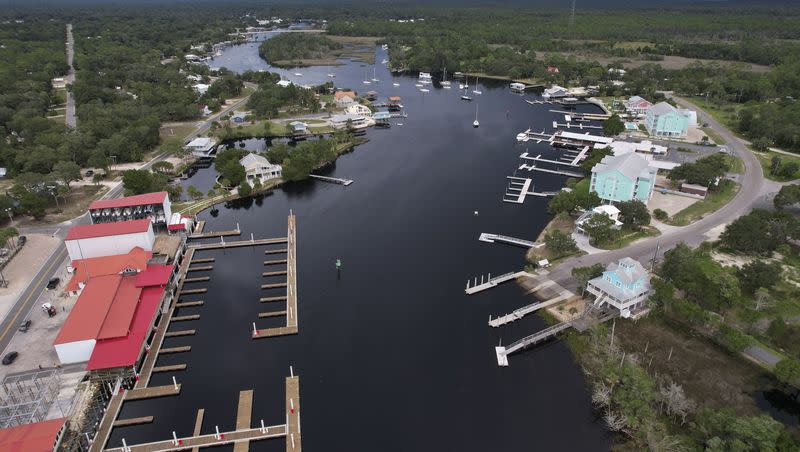Hurricane Idalia slams Florida’s Gulf Coast with dangerous Category 3 strength

- Oops!Something went wrong.Please try again later.
Hurricane Idalia continues to make its way across parts of Florida with powerful Category 3 strength.
It’s the first time the region has experienced such a “deadly storm surge and catastrophic winds” in 125 years, CNN reported. Idalia first made landfall in Florida’s Big Bend region, along Florida’s Gulf Coast.
The center of the storm “came ashore near Keaton Beach at 7:45 a.m. EDT with maximum sustained winds of 125 mph, making it a strong Category 3,” according to The Weather Channel.
Areas along the Atlantic coast, including Georgia, South Carolina and North Carolina, also have watches and warnings in effect, per The Weather Channel.
More than 215,000 homes and businesses don’t have power, according to Power Outage analysis.
How Florida prepared for a Category 3 hurricane
Gov. Ron DeSantis said the state would waive highway tolls, as shelters and hotels were being prepared to accept evacuees and those who need help. According to USA Today, more than 30,000 utility workers are prepping for outage repairs for when the storm ends.
“Everybody on the Gulf Coast from Tampa Bay to northwest Florida must be vigilant,” DeSantis said during a briefing, per USA Today. “You’re going to see some nasty weather.”
Streets have already flooded in some regions, and the Tampa International Airport has shut down, per The Weather Channel.
What does a Category 3 hurricane mean?
The category system, known as the Saffir-Simpson Hurricane Wind Scale, comes down to one element — wind speed. The National Hurricane Center implements a rating system of 1 to 5 “to categorize hurricanes according to their maximum wind speed,” The Wall Street Journal reported.
Here are the ranges for the different categories, according to WSJ.
Category 1: 74-95 mph winds — “Very dangerous winds will produce some damage.”
Category 2: 96-110 mph winds — “Extremely dangerous winds will cause extensive damage.”
Category 3: 111-129 mph winds — “Devastating damage will occur.”
Category 4: 130-156 mph winds — “Catastrophic damage will occur.”
Category 5: 157 mph or higher — “Catastrophic damage will occur.”
How the hurricane could impact travel — flights, theme parks
Airports: All flights were canceled Tuesday in and out of Tampa International Airport. United, Delta and American airlines reported 460 delays combined and more than 200 cancellations due to the storm so far, per KCRA.
Airports in St. Pete-Clearwater, Sarasota and Tallahassee also closed Tuesday night, according to the Federal Aviation Authority.
Delta, Southwest, JetBlue and United are allowing passengers traveling to areas impacted by Idalia to “make changes for free within an allotted time,” CNN reported.
Theme parks: Busch Gardens Tampa Bay and Adventure Island water park both closed Tuesday afternoon, per USA Today. Busch Gardens could reopen Thursday, while Adventure Island plans to remain closed until Friday.
Legoland Florida and SeaWorld Orlando remain open but plan to close down some park operations, depending on how the storm affects the parks, per USA Today.
Walt Disney World and Universal Orlando Resort remain open and operating under normal conditions.

